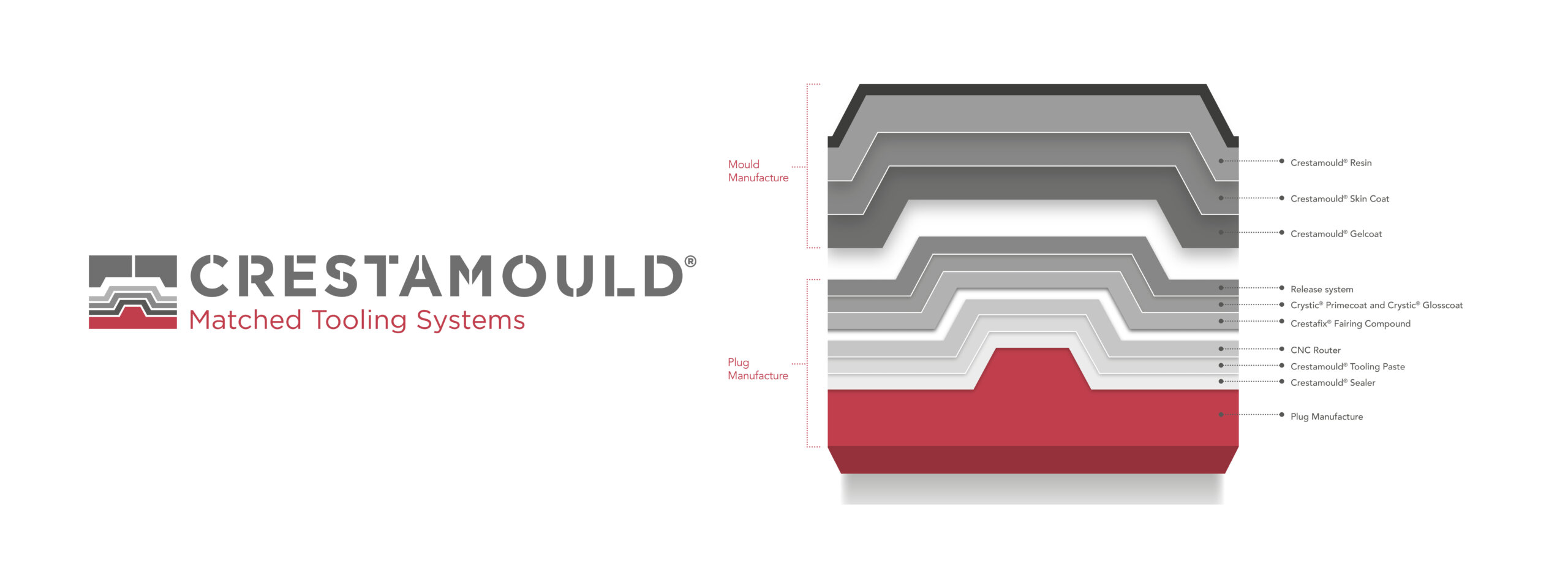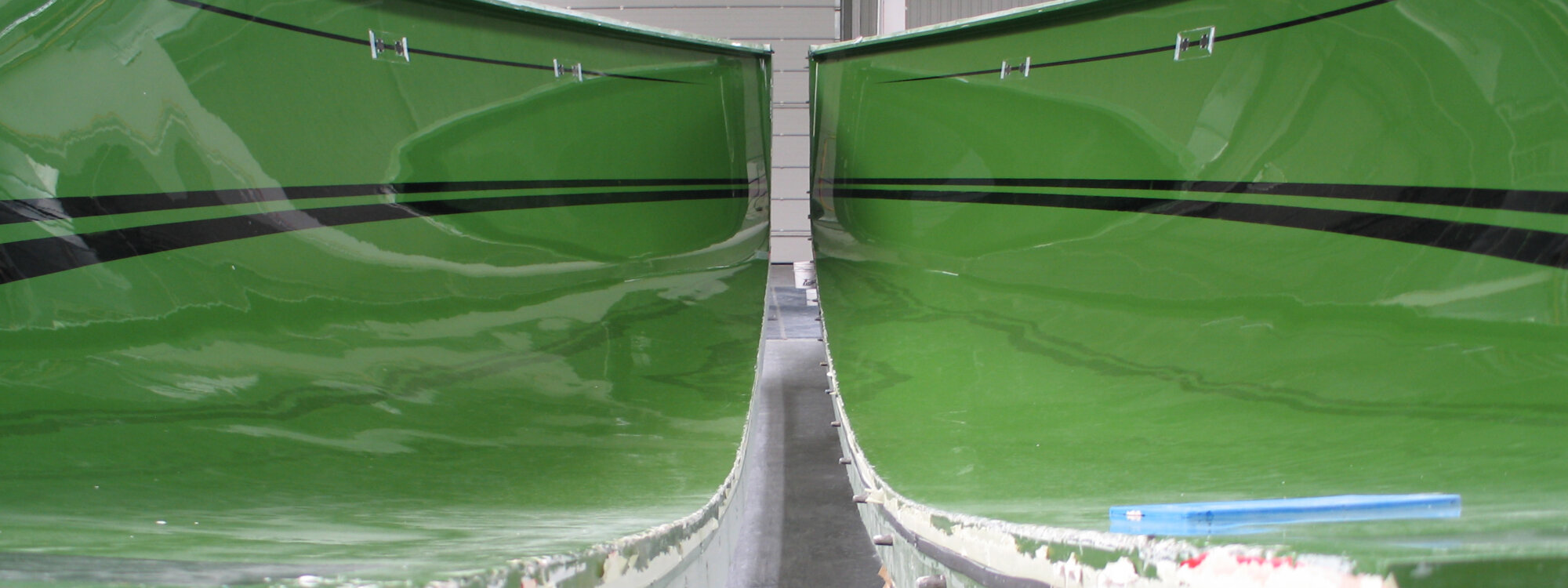Composite tooling
A ‘tool’ is something we use to make or shape things, this could be many things including a saw, a lathe, a hammer, or a mould. The tool can be used once or many times and be as simple or complex as you require.
To make a composites part we need to:
- Make a mould (‘tool’) to produce the part in its designed shape
- Moulds can be machined direct from metals or other suitable solids
- More often, moulds are made from a pattern identical to the shape of the part that is to be made
- The pattern can be an existing moulding (a ‘plug’) or made from scratch using fairing compounds over a wooden or foam base
 Scott Bader has a range of products in our Crestamould matched tooling range. The quality of tooling is central to the quality of composites part production.
Scott Bader has a range of products in our Crestamould matched tooling range. The quality of tooling is central to the quality of composites part production.
Plug making
A plug is an existing moulding used to make a new mould. Traditionally, plugs were made from scratch out of wood but it was a slow process and relied on the individuals ability to correctly interpret engineering drawings. Furthermore, joints and bond lines could affect the stability and surface finish and wood is susceptible to changes in ambient temperature and humidity.
For modern complex or streamlined designs a more design-friendly approach was needed. Modern CNC techniques allow plugs to be directly machined from a solid material, typically MDF or a rigid foam made from polyurethane or polystyrene. These materials can in turn be coated with a ‘fairing layer’ usually a thermosetting resin compound – polyester or epoxy based. A specialised coating is then applied to ensure the required level of finish. Finally, a release agent to allow the mould to be taken off the plug with minimal or no damage.
Plug making materials supplied by Scott Bader
Wood, MDF, and foams are good pattern materials but they can’t be machined to the required degree of accuracy for modern designs.
Scott Bader offers Crestamould T29 tooling pastes, applied thickly – up to 25mm – for precision 3-axis CNC milling machines to achieve the final shape. It can be applied by spray or extrusion, and is strong enough to resist the stress of mould building. It can be used to create limited-production moulds directly.


